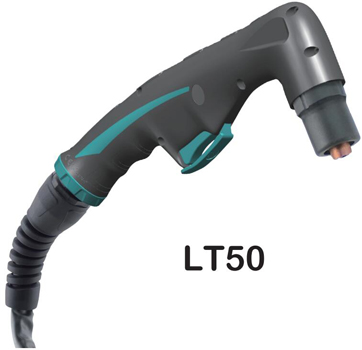Benefits of plasma cutting
Manufacturers, contractors, maintenance personnel, artists and do-it-yourselfers who have experienced the benefits of handheld air plasma arc cutting machines rarely want to return to oxyacetylene cutting or mechanical cutting processes such as saws, cut-off wheels, shears and shears. Next, the plasma cutting torch supplier will share the following content with you.
Plasma cutting can increase productivity and reduce cutting costs. The benefits of plasma cutting include.
Faster cuts
No preheat cycle required
Cuts any conductive metal (unlike oxygenated fuels, which cannot cut stainless steel or aluminum)
Provides portability for on-site work
Minimizes heat-affected areas and produces kerfs with small cuts (kerf width)
The plasma unit can also chisel, pierce, bevel, cut holes and trace out shapes.
The actual process of operating a handheld air plasma cutter is relatively simple. In fact, the hardest part is before you hit the arc - choosing the best machine for your application and selecting the right accessories.

Consumables and accessories for plasma cutting
Different consumables and torch accessories enable configuring a plasma cutter for a variety of applications and operator skill levels.
Regular and extended cutting tips: For cutting, select a regular or an extended cutting tip. With plasma units greater than 40 amps, a built-in drag shield protects the regular tip and automatically holds it 1/8 inch off the surface of the workpiece (with units less than 40 amps, the tip can be placed directly on the workpiece). For following straight edges or tracing stencils or patterns, many people select this arrangement because it allows them to simply brace the edge of the drag shield on a guide (a ruler, piece of wood, cardboard pattern, etc.) and start cutting.
Extended tips:
For beveling, cutting in corner and a better view of the cutting arc, some operators prefer an extended tip. This tip protrudes 1/2 to 1 inch beyond the retaining cup, enabling the operator to better direct the flow of plasma jet and reach into corners. Having a steady hand is important because touching the tip to the workpiece three or four times enlarges the hole in the tip to the point where it no longer constricts the arc sufficiently.
Roller guides and circle cutting guides: The cut will reflect any hand movement, so if you don’t have a steady hand, consider using roller guides and circle cutting guides. These guides hold the torch in position, prevent the tip from touching the workpiece, and make it easier to travel in a straight line or cut a perfect circle.
Gouging tips:
For removing old or imperfect welds, use a gouging tip. The hole on a gouging tip is three to four times wider than a regular tip. Its cone shape pushes out the plasma arc, which removes much more material than the constricted orifice of the regular tip. Many people do not believe that plasma works well for gouging, but that perception is based on older machines with weaker arcs.






